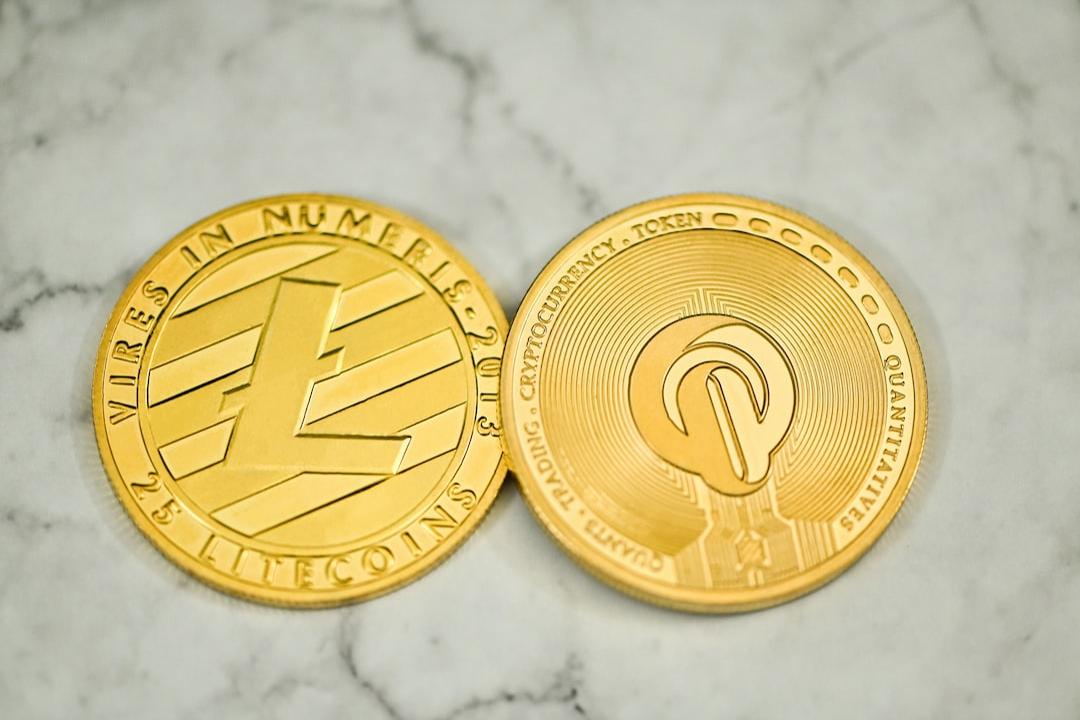This article will delve into the development trends of RWA (Real World Asset Tokenization), analyzing the application scenarios of RWA, the types of assets suitable for blockchain, past and present solutions, and changes in market direction. This article is derived from a piece written by @Wuhuoqiu, an investment and research partner at ABCDELabs, and has been organized, translated, and authored by wublockchain.
(Background Summary: “Letting Reality Go On-Chain” RWA Public Chain Plume: What Does the Ideal Crypto World Look Like?)
(Background Supplement: RWA Primer: How Blockchain Will Change the Future of Physical Asset Tokenization)
Having discussed the perspectives from the East and the West on the market, today I would like to take this opportunity, coinciding with YZi Labs’ announcement of its investment in the RWA platform Plume Network, to discuss the recent changes I have observed in the RWA track.
This can be broken down into four parts:
- Does RWA really have application scenarios, or PMF?
- Which RWA assets are suitable for blockchain, and which are not?
- What were the past solutions, and what are the current solutions?
- Have you sensed the market direction for RWA in recent months?
First, let’s discuss 1 – Does RWA really have application scenarios, or PMF?
– (Here, I will first exclude the stablecoin track of US Treasury bonds on-chain, as Usual, MKR, etc., have already found PMF.) Taking US stocks on-chain as an example, this is a topic that has garnered significant attention on Twi. Many believe that bringing US stocks on-chain is unnecessary, as those who really want to trade US stocks have their own channels, and any asset on-chain is more volatile than US stocks; there’s no need to play the stock market on-chain.
In contrast, I have a different viewpoint. I personally believe that US stocks on-chain have their significance.
- From the channel perspective – indeed, most big players above A8 and A9 use securities platforms like Futu and FirstTrade to diversify their investments in coins, stocks, gold, etc. However, I believe most retail investors in the circle do not have US stock accounts. Trading US stocks on-chain can at least open up a purchasing channel for them without barriers. From another perspective, the total market value of stablecoins like USDT/USDC is growing larger, which represents another avenue of diffusion for the dollar’s hegemony relative to traditional finance. If Crypto, through stablecoins + Payfi + a payment experience akin to Alipay, ever reaches mass adoption, do you think Americans will welcome the world to take over US stocks for them? Wouldn’t most people in other countries prefer to struggle for days opening accounts with various banks and brokerages to buy their own struggling stocks, rather than simply one-click investing in the seven sisters of the world’s largest economy like shopping on Taobao?
- From the application scenario perspective, imagine this case: as a P player, you made a profit of 100,000 U in Mubarak recently, and you know that Tesla has recently been halved, making it a good time to buy the dip. Then you want to exchange this 100,000 U for Tesla stock. Even if you have a US stock account, you will first need to convert this 100,000 U into fiat currency through OTC, then transfer the fiat through a bank to the broker’s account, and then start buying from the broker. This whole process typically takes 3-5 business days (back in 2017, before I got into Bitcoin, I bought US stocks through FirstTrade in Australia, and just the Swift transfer took 4-5 days, plus a hefty fee of several dozen dollars). If one day Tesla rises and you want to sell it to convert into BTC or U, you have to repeat this whole process… Imagine if US stocks were on-chain; you could instantly convert the U you earned from memes into Tesla stock. This reduction in friction costs is not just a little improvement; it’s a tenfold or hundredfold enhancement in experience.
Now let’s discuss 2 – Which RWA assets are suitable for blockchain?
Similarly, T-Bills, which have already proven themselves, are not under discussion. Other RWA assets depend on the specific target audience.
For the To C end, stocks are undoubtedly the most suitable. Most retail investors are unlikely to have encountered first-level private equity; even if you tokenize the equity of a non-listed company, very few people would likely understand it enough to buy and hold. Moreover, private credit collateral like bridge loans in the real estate market and corporate accounts receivable loans on Centrifuge are also not suitable for To C. The vast majority of C-end users should be most familiar with stocks. More C-end scenarios should involve enabling users who previously had no purchasing channels to buy assets on-chain, representing a process from 0 to 1.
On the other hand, for the To B end, there are many more things that can be tokenized, but compared to the To C process of going from 0 to 1, the To B end should be more about reducing friction, moving from 1 to 100. Just as first-level private equity already circulates among institutions and high-net-worth individuals, bridge loan collateral on Centrifuge is likely to secure funding from banks as well; it’s just that this circulation process is relatively cumbersome and friction-heavy. Putting it on-chain could significantly enhance user experience and transfer speed, akin to Payfi compared to Swift.
Speaking of this, I recall discussing an RWA project last year, whose parent company is among the top asset management institutions in the US. They planned to issue tokens based on their clients’ first-level equity, such as Musk’s SpaceX, on their trading platform, allowing these tokens to circulate easily and be transferred, ultimately settling directly upon SpaceX’s IPO. So for To B, apart from the targeted trading users limited to institutions and enterprises, the issuing entity is also relatively constrained. Just like in the previous example, unless you possess significant equity in SpaceX, merely being an STO or RWA platform would make attracting SpaceX equity holders to issue tokens representing SpaceX equity involve considerable friction related to resource cooperation, legal clauses, and more.
There are also many intermediate states that can be both To C and To B, such as IPs on-chain like Story Protocol, or royalties from a novel, box office from a movie, or sales from a game tokenized; these feel like they are still in the early exploratory stage, requiring trial and error for validation. For instance, influence tokenization has seen failure with FT, while Kaito has been relatively successful. Celebrity time tokenization, like http://Time.Fun, flared up for a few days before disappearing… These things need to be approached slowly.
Next is 3 – What were the past solutions, and what are the current solutions?
Taking US stocks as an example again – past solutions were primarily synthetic assets, represented by SNX, Terra’s Mirror, and GNS. This approach has essentially been disproven, and the aforementioned three platforms have early removed the synthetic US stock assets they listed due to two reasons. First, there’s a lack of interest in synthetic “fake assets” created from stablecoins or local currencies (like SNX). A comparison of the volumes of BTC, WBTC, and SBTC from SNX can illustrate this. Synthetic assets are, to be frank, less reassuring than reflective assets like WBTC. Second, back in the day, when the SEC frequently conducted investigations, even though synthetic assets were fake, the SEC could inquire without needing a reason, making it prudent for these platforms to delist synthetic US stocks.
Now with Trump’s administration and the SEC’s transition, regulation in this area is evidently much better than in the past two years. Two new solutions for US stocks on-chain have emerged:
- One is to follow the traditional compliant broker-dealer route. When users buy tokenized stocks on-chain, it triggers corresponding actions by an off-chain compliant broker in the US stock market, essentially akin to placing orders on Robinhood, where Citadel “purchases” stocks on behalf of users. The advantage is that the stocks you buy are “real stocks,” or at least backed one-to-one by this broker, similar to WBTC’s relationship with BTC. The downside is that trading hours completely align with stock market hours, so it cannot operate 24/7 like Crypto, and you have to establish trust with this broker or platform. Additionally, selling will trigger a taxation event; US citizens may need to submit tax-related forms, while non-US citizens will at least have to undergo KYC, which can be cumbersome.
- The second approach is Ondo Global Market’s method. After reviewing their documents, they initially aimed to follow the broker-dealer route but later shifted to a stablecoin-like model, allowing their partnered or authorized issuers to directly issue tokenized stocks (similar to Tether issuing USDT or Circle issuing USDC). This seems more flexible and potentially frees users from the constraints of US stock trading hours, ultimately settling through the issuer at a designated time. The downside is that it would likely only cater to non-US users, as US users may be excluded. Furthermore, it raises the question of whether different issuers would issue the same stock with different CAs (similar to how different bridges for USDC on different chains are incompatible), but these specific details weren’t outlined, as the product is set to launch next year.
Finally, platforms like Plume feel more like a framework that includes KYC/AML, data storage/execution, consensus, ZKTLS verification, etc., theoretically allowing partnering institutions to issue various tokenized RWA assets. This brings us back to the previous discussion on “which assets are suitable for blockchain,” which I won’t reiterate.
Finally, let’s discuss 4 – Have you sensed the market direction for RWA in recent months?
If you have been paying attention, RWA has been witnessing quite a significant wind in recent months. Here are a few “news” items I have observed:
- The aforementioned Ondo plans to launch Ondo Global Market, an on-chain stock market, by the end of this year or next year. Additionally, Ondo has been closely collaborating with Trump’s WLFI.
- Sui has recently also been closely associated with WLFI.
- Frax is actively embracing Cedefi and recently launched frxUSD in partnership with BlackRock and Superstate.
- Ethena released a new product today called Converge, targeting what they believe are two of the most crucial scenarios in blockchain – storage and settlement for stablecoins and tokenized assets.
- AAVE plans to issue a new coin called Horizen, which has sparked a tremendous reaction within the community. Stani personally clarified, “The Horizen plan aims to fill the current gap in Aave’s RWA business sector, with the potential to exceed the revenue of Aave’s existing business line in five years.”
- The South Korean Financial Services Commission plans to release a statement in February 2025, intending to phase in allowing corporate entities to engage in virtual asset trading. I learned from friends in Korea that there may be plans to restart STO (the previous term for RWA). One can imagine that allowing “corporate entities to trade virtual assets” is certainly not about letting companies speculate on coins; it is definitely aimed at tokenizing some real financial assets into “virtual assets” for circulation between companies.
- Today, YZi Labs officially announced its investment in the recently prominent Plume Network RWA platform.
The momentum from these messages cannot be ignored, so my current perspective on the main track for the next Circle is PayFI + RWA + Web2.5-like Consumer APPs. As for AI + Crypto, I can only say there is hope, and I am still in the process of discussion and observation.


